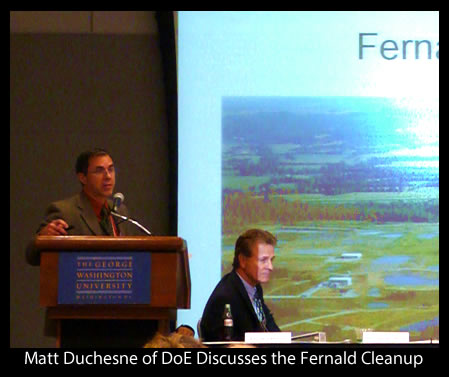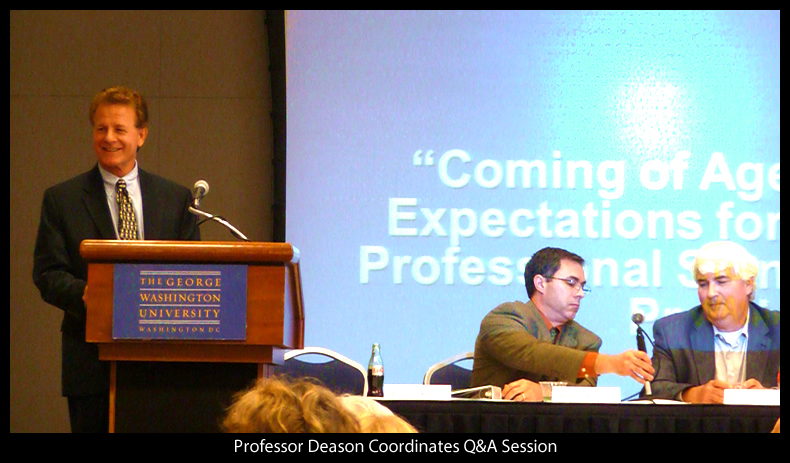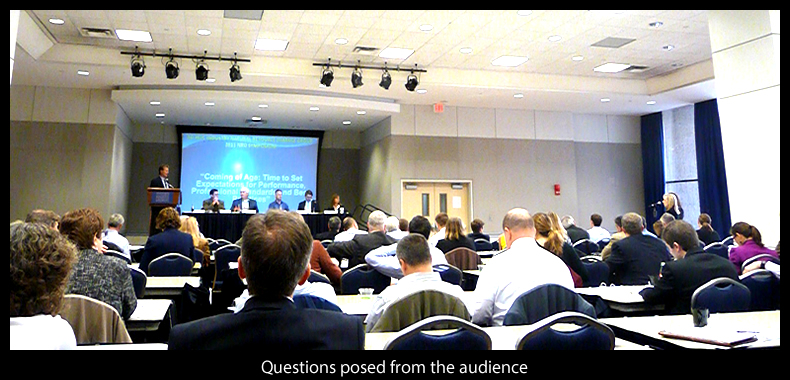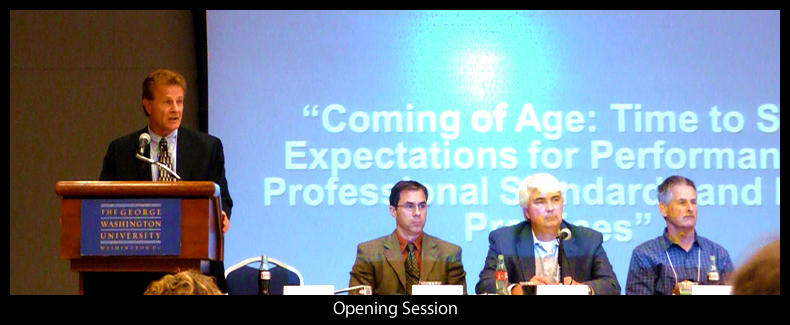Several EEM students and faculty members were involved in the 8th Natural Resource Damage Symposium: "Coming of Age: Time to Set Expectations for Performance, Professional Standards and Best Practices," held on October 25-26, 2011 in the Cafritz Conference Center on GW’s Foggy Bottom campus.

At the event, EEM Lead Professor Jonathan Deason chaired the Plenary Session on “Site Remediation, NRDAs and Restoration – Current Practices and New Approaches.”
The plenary session was divided into two parts. The first sub-session was entitled “Coordinating NRDA and Remediation to Promote Restoration – One Size Does Not Fit All.” Speakers for that sub-session were:
- Matthew Duchesne, U.S. Department of Energy, Washington, D.C.
- Steven Jones, Ph.D., Conestoga-Rovers and Associates, Seattle, Washington
The second sub-session was entitled “Identifying Restoration Needs to Help Resolve NRD Liability,” which included presentations by:
- Michael Ammann, Chevron Energy Technology Company, Richmond, California
- Jean Martin, British Petroleum, Houston, Texas
- Robert Unsworth, President, Industrial Economics, Incorporated, Cambridge, MA

The purpose of the first sub-session was to explore the interface of remediation, assessment and restoration activities, including how some of the actions undertaken during cleanup can benefit and help scope assessment and restoration activities. The focus of the second sub-session was to explore innovative remediation, assessment and restoration techniques used at specific sites to promote efficient and effective resource service restoration.
In his opening remarks, Professor Deason addressed the need for fostering the integration of remediation and restoration via cooperative approaches. Deason indicated that the integration of remedial actions with NRD assessment and restoration actions can be a highly efficient and effective restoration approach -- restoring damaged natural resources more quickly, saving money for all involved stakeholders, and resolving liabilities in a timely manner.
He said that the goals of the two major federal NRD trustees, Interior and NOAA, are intended to be to effectively work to integrate the remedial and damage assessment processes so that natural resource injuries residual to cleanup are reduced to the maximum extent possible or entirely eliminated. Where natural resource injuries residual to cleanup exist, such injuries are best addressed via direct restoration planning with limited damage assessment activities.

Deason indicated that the best path to achieving those goals involves conducting cooperative and integrated processes for remediation and restoration leading to negotiated comprehensive settlements via consent decrees or other appropriate instruments. He explain that use of a separate damage assessment process also will lead to a restoration plan, but is an inferior approach because it does not have the inherent flexibility, speed, and cost efficiency of the integrated/cooperative approach. He expressed the opinion that a damage assessment process separate and apart from the remedial action process should only be undertaken by the federal and state trustees when responsible parties will not cooperate despite the best efforts of the trustees to facilitate cooperation, in situations in which remedial actions for technical reasons cannot address significant amounts of natural resource injuries, or in situations where remedial timelines are incompatible with NRD timelines.


